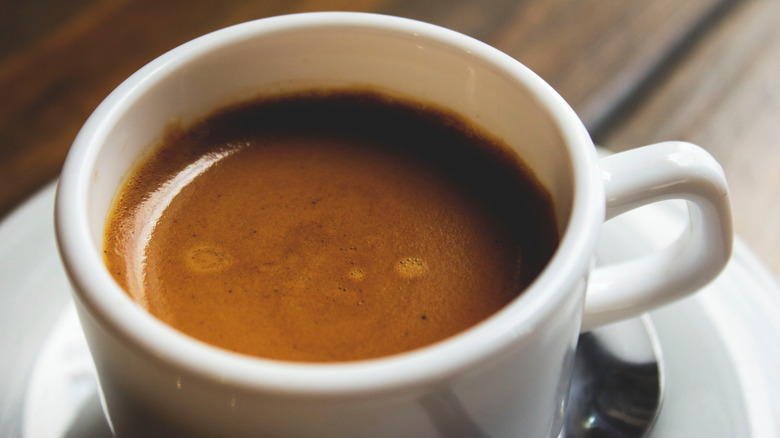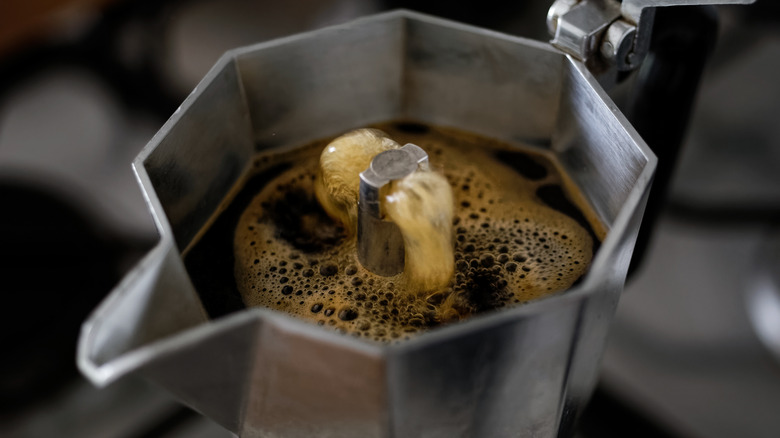How Cafecito Gets Its Unique Taste
What do Cuban coffee shops have that the millions of Starbucks in the U.S. don't? The one and only cafecito. Unlike a latte, made for daily runs and multitasking, the cafecito is intended to be shared, slowly enjoyed and tasted. Sometimes along with a Cuban sandwich or after a delicious meal, but most of the time, as a break from the day. Coffee is one of the things the Cubans are most proud of — a market that has survived generations, time, and political boundaries.
The cafecito, also called a café Cubano (Cuban coffee), is a small coffee that stands out for its foamy layer on top, usually light brown. It was invented shortly after Italians arrived in the country, around the 1800s (via Weaver's Coffee & Tea). It's an icon of Cuban coffee shops, along with other espresso drinks known as colada or cortadito.
Although from afar a cafecito might look the same as a macchiato — an espresso shot with a touch of milk foam on top — the flavor is completely different. A macchiato is bitter, a cafecito has a unique taste, it's quite sweet but intense, and has a smoother and bolder texture than other regular espresso drinks. Sounds perfect, right? The secret lies in its preparation, especially the technique used to mix sugar and coffee — probably the most important step while making a cafecito.
It's all about the technique for creating the foam on top
Ember notes that what distinguishes the cafecito taste is that it is sweetened with a sugar foam, which results from mixing demerara sugar with the first drops of espresso. Sassy Spoon calls this foam espumita. This requires some time and strength mixing sugar and espresso, until it looks like a light brown paste. This would also bring a creamy touch to a drink that is already quite strong. This tastes completely different from a regular shot of espresso that has no sugar, or sugar added after it was served.
As Gemary Ermus explains in her video, you can use any type of espresso maker, but a stovetop one is highly recommended. Try getting any type of Cuban coffee brand, like Café La Llave, to have the complete experience. Remember, the most important step is the mixing of sugar with drops of coffee until it looks like a paste.
After this is done and the coffee brewed, combine the paste with the coffee in any type of jar, and finish mixing until you can see a foamy layer on top. Serve it on your favorite espresso shot, and enjoy the unique taste of a coffee that's strong and sweet at the same time. If you are not ready to master it, find the closest Cuban coffee shop and order a cafecito — you won't regret it.

